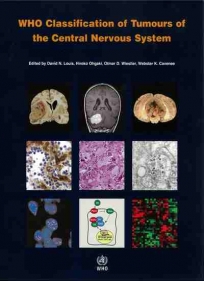
978-92-832-2430-3
***This book was highly commended in the Pathology category of the British Medical Association's 2008 annual Medical Book Competition.*** WHO Classification of Tumours of the Central Nervous System is the first volume of the 4th Edition of the World Health Organization series on histological and genetic typing of human tumours. This authoritative, concise reference book provides an international standard for oncologists and pathologists and will serve as an indispensable guide for use in the design of studies monitoring response to therapy and clinical outcome. Diagnostic criteria, pathological features, and associated genetic alterations are described in a strictly disease-oriented manner. Sections on all recognized neoplasms and their variants include new ICD-O codes, incidence, age and sex distribution, location, clinical signs and symptoms, pathology, genetics, and predictive factors. The book, prepared by 73 authors from 19 countries, contains more than 400 colour photographs, numerous X-rays, computed tomography (CT), magnetic resonance (MR) images, charts, and more than 2,500 references. ...The title of this book is typically modest. It is not only a classification of tumours of the central nervous system but an authoritative and explicit account of this group of tumours...This, the fourth edition, contains a number of distinct improvements on previous editions, both in layout and content... One new feature is the clear account of the WHO's grading system, its rationale and its application... New tumour entities are included...Newly recognized histological variants include pilomyxoid astrocytoma. Both anaplastic medulloblastoma and medulloblastoma with extensive nodularity have gained recognition in the classification... There are some differences in classification from the third edition, most notably relating to anaplastic oligoastrocytoma. The change in emphasis follows cited differences in prognosis between mixed tumours with and without necrosis. Other changes are also apparent, e.g. within the atypical teratoid/rhabdoid section, mention of the INI-1 locus in the genetics section in the third edition has been expanded to include immunohistochemistry in the fourth edition. The fourth edition is unique in its clear-targeted and succinct style of presentation of tumours of the CNS... it will be of universal appeal in neuro-oncology and will most certainly form the main basis for diagnosis by multidisciplinary teams managing patients with tumours of the CNS. -- Nicki Cohen* and Roy O. Weller**, *Specialist Registrar in Neuropathology, Southampton University Hospital NHS Trust, UK. ** Emeritus Professor of Neuropathology, Southampton University, UK in Neuropathology and Applied Neurobiology. ...Representing the first volume in the fourth edition series of the World Health Organization (WHO) Classification of Tumours, this book provides a welcome mix of old and new. ... Perhaps the most noticeable improvement comes by way of a voluminous expansion in the genetics sections of the majority of tumor categories. This update parallels the recent explosion of research utilizing high-resolution genome screening and other molecular techniques. The authors have done an outstanding job in distilling the information housed in over 2,500 cited references into a readerfriendly authoritative reference of CNS neoplasia. In summation, the current edition of the WHO Classification of Tumours of the Central Nervous System will serve as an indispensable textbook for all of those involved in the diagnosis and management of patients with tumors of the CNS, and will make a valuable addition to libraries in pathology, radiology, oncology, and neurosurgery departments. --Journal of Neuropathology & Exp. Neurol. ...The book covers a complex field with absolute clarity. It s highly specialised, but written in a very straightforward, concise way. Well-edited - you would never guess there were 73 authors! You can find what you are looking for in the blink of an eye; and then it tempts you to read the next chapter, too! - British Medical Association